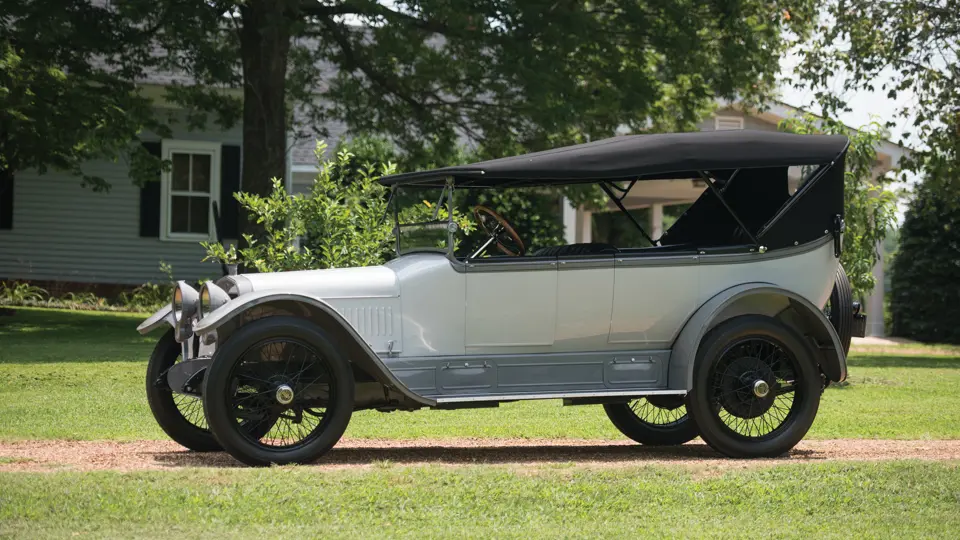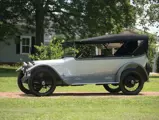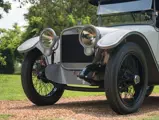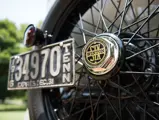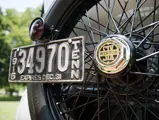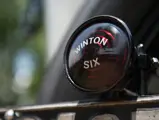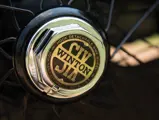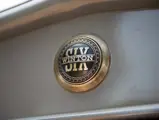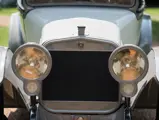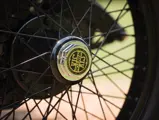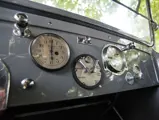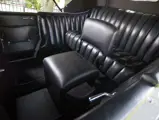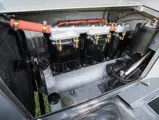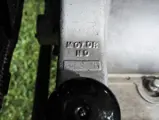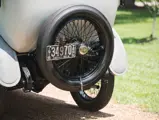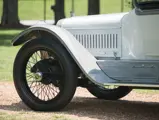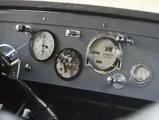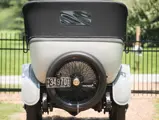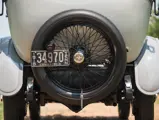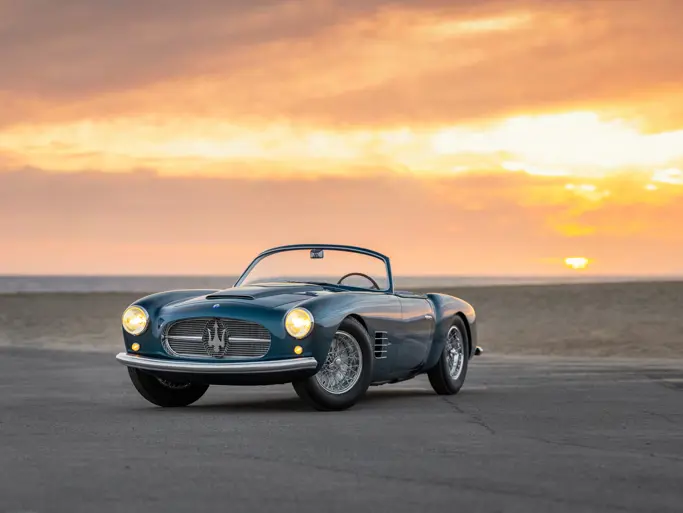Model 22-A. 33.75 rated hp, 347.9 cu. in. inline L-head six-cylinder engine, four-speed manual transmission, solid front axle with semi-elliptical leaf springs, live rear axle with three-quarter-elliptical leaf springs, and two-wheel mechanical drum brakes. Wheelbase: 128 in.
If “competition” describes Winton’s early years, the second decade is best characterized by consistency. Having established a pattern of large, six-cylinder cars in 1908, the Winton Motor Carriage Company built nothing else for its remaining 16 years.
Changes were few. Following the rest of the industry, Winton switched to left-hand drive for 1914 and finally offered an electric starter as an option the following year. Alexander Winton was firmly committed to his compressed-air starter and agreed to the change only after a contingent of dealers implored him to embrace the simpler and then-proven electric type.
Winton’s interests had begun to diverge as early as 1912. He had been interested in marine engines for some years and in 1912 established a subsidiary business called Winton Gas Engine & Manufacturing Company to build marine and stationary engines. In 1913, it branched into diesels. The automotive entity was reorganized as Winton Motor Car Company in 1915.
In time, the diesels came to dominate Winton business, particularly during World War I. Although orders declined once the war was over, the engine business continued to overshadow automobiles, to the extent that car manufacturing ceased. In 1930, the engine operations were purchased by General Motors, who also acquired Winton’s chief customer, the Electro-Motive Company, also of Cleveland. Electro-Motive manufactured rail cars, and the merging of these two companies put GM at the forefront of the nascent diesel-electric locomotive revolution.
Winton made one further addition to the product line, however, in 1916. Seeing a market for a lighter car, the company introduced the Six-33, catalogued as the Model 22-A. The Six-48, Model 22, had grown to a 138-inch wheelbase and kept the 48-horsepower engine, now displacing 525 cubic inches. The Six-33 was ten inches shorter, had a smaller 33-horsepower, 348-cubic inch six, and sold for two-thirds the big car’s price. It was an evolution of the Six-33 that became Winton’s single model in 1921, but sales were dismal. After selling but a few hundred cars in 1922 and 1923, the automobile factory was closed down in February 1924.
Harold Coker acquired this Winton Six-33 in 1992. He bought it from Bert Harrison, of Salem, Oregon, who reportedly acquired it from the Harrah Collection. As received, it was missing most of its aluminum, apparently having been scavenged for scrap during World War II. The scavengers had liberated not only the obvious heavy pieces, from the engine, crankcase, and oil sump, but also peeled the aluminum panels off the body.
Harold sent the remains to Stan Francis in California, who created a new body for it. Francis, ironically, had discovered the ruins in Texas some years before and sold them to William Harrah. The project proceeded slowly, as engine parts had to be sourced. Lester Rice’s Peggy Craft Restorers completed the authentic restoration in 2007. It was shown at Amelia Island in 2008 and received a National First AACA award at Cleveland, Tennessee, the same year, medallion W21900. It achieved Senior status in Louisville in July 2015.
Its appearance can best be described as understated elegance. Painted in two gentle shades of gray, it has virtually no brightwork. Even the headlights and windshield frame are painted, in the darker of the two grays. The upholstery is pleated black leather, all excellent, and matches a new black canvas top. The jump seats in the rear compartment fold up out of the floor, and the instrument panel comprises just a Warner Autometer, an ammeter, and a Waltham clock. The odometer reads 25,395 miles.
The engine compartment is spotless, having been recently detailed while the radiator was off for some repairs. The undercarriage is also very clean but has not been over-restored. The car rides on 36x5 Universal blackwall tires mounted to black wire wheels.
Wintons were always strong runners, and this car is no exception. Capable of moving with modern-day traffic, it is as suited to long-distance tours as to driving around town.
Some cars live long lives. This one, remarkably, has had two.
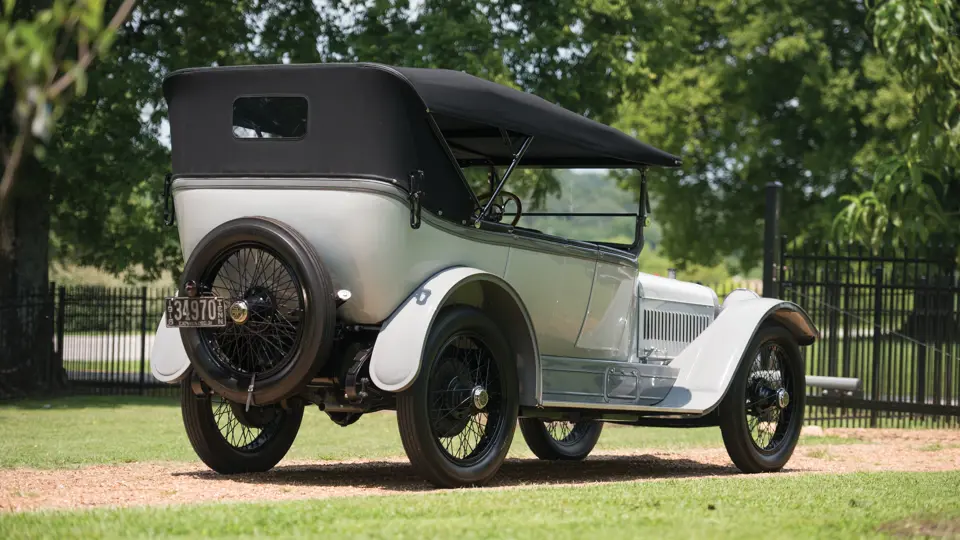
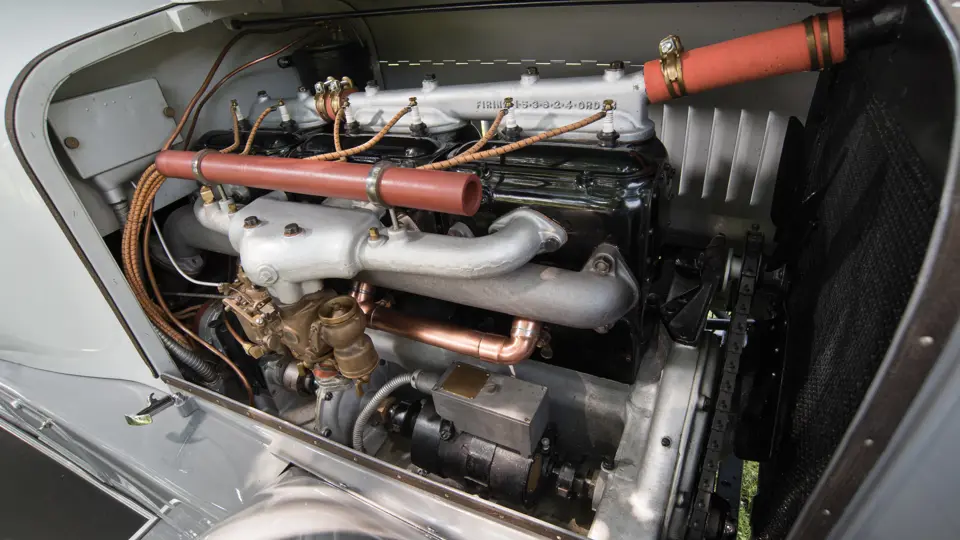



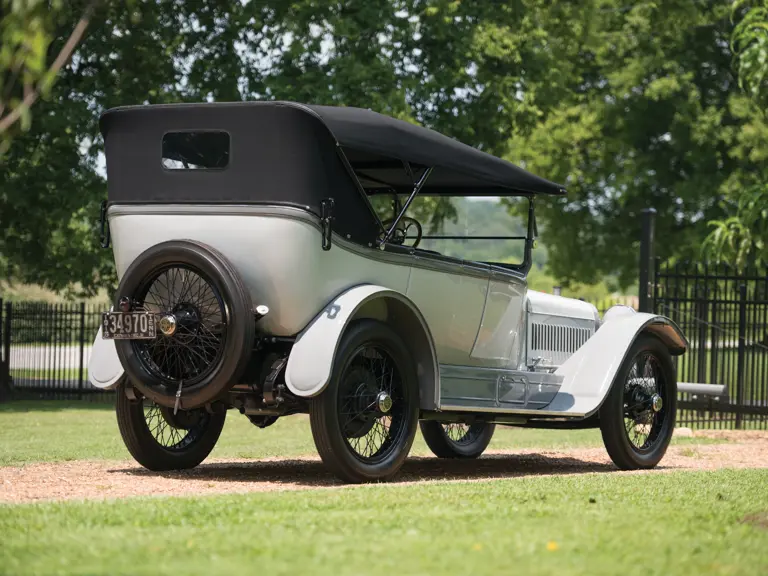

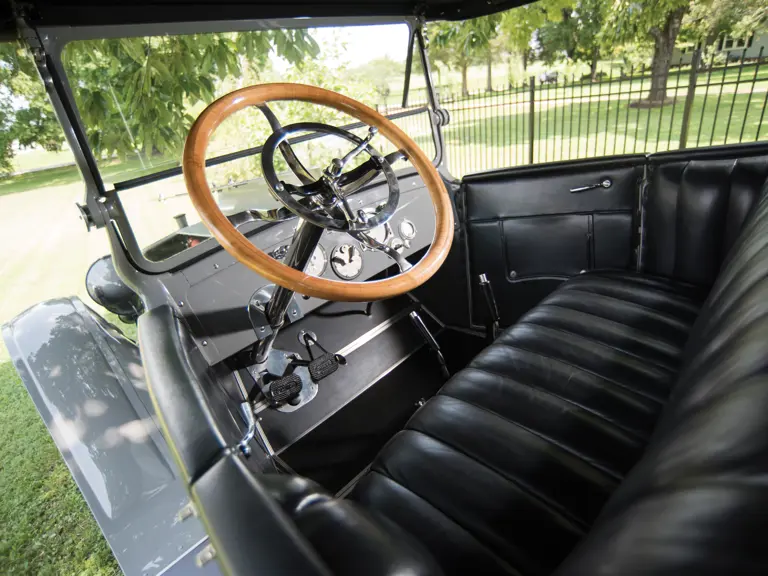
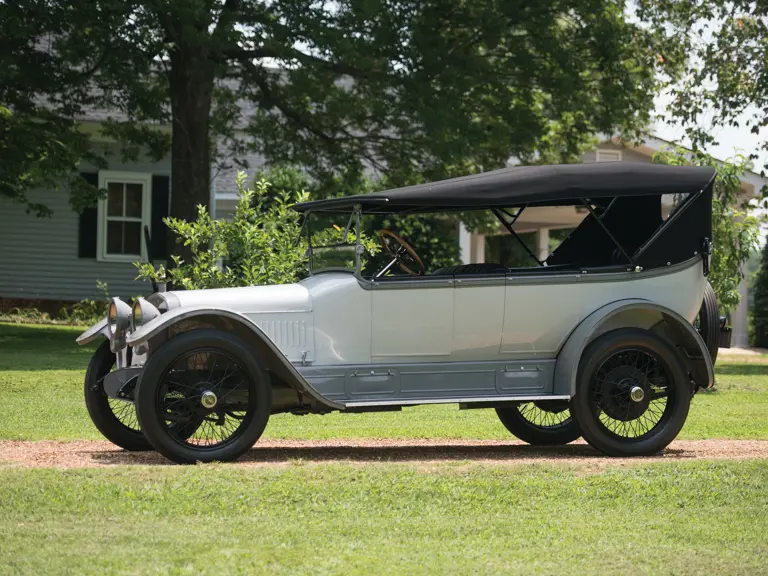
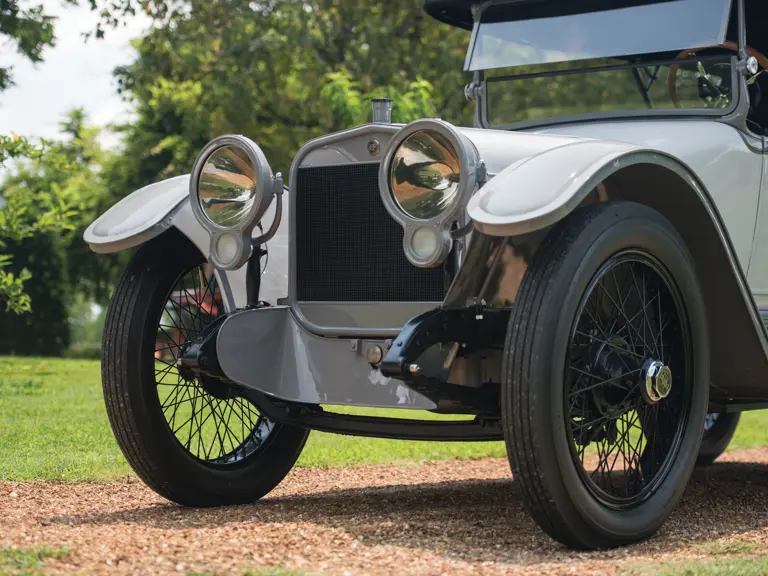
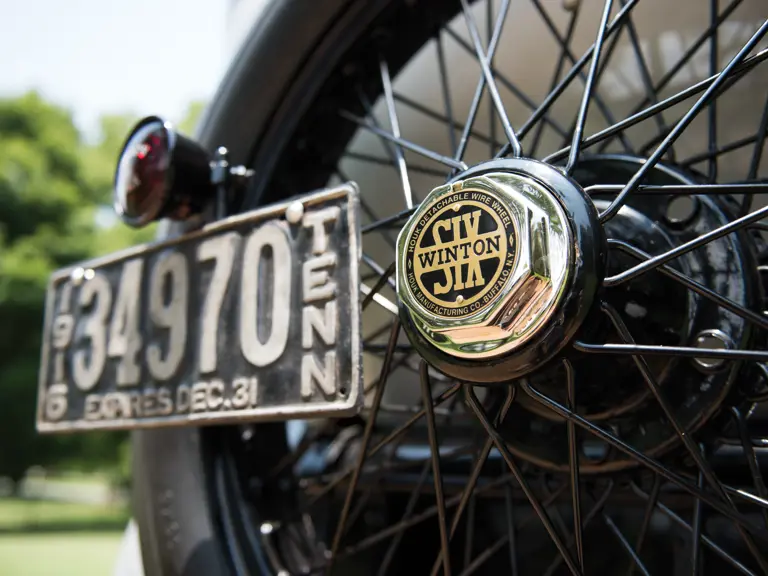

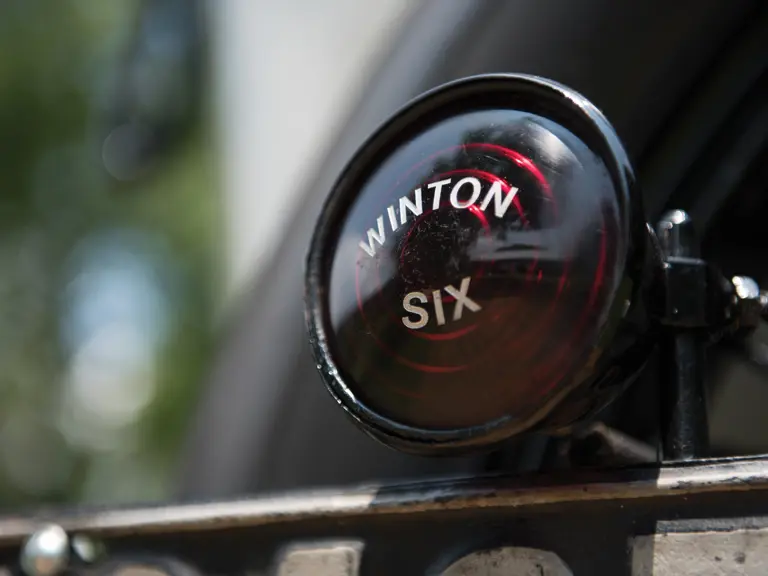
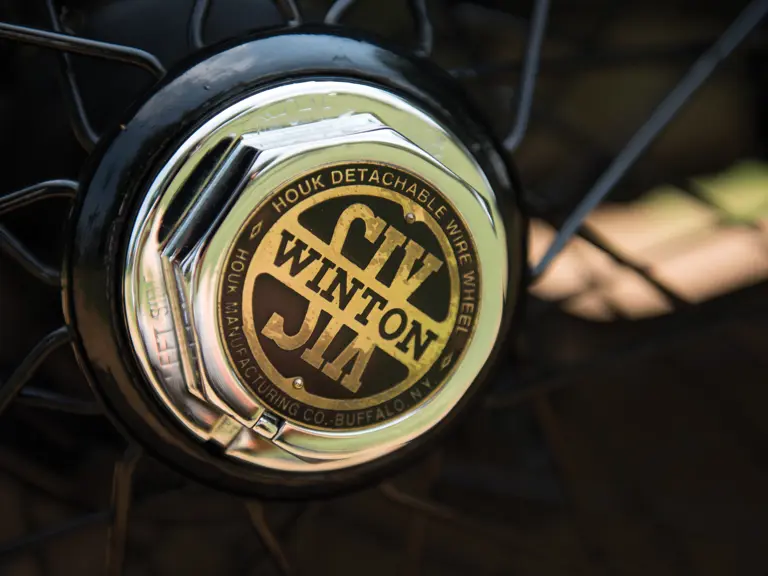

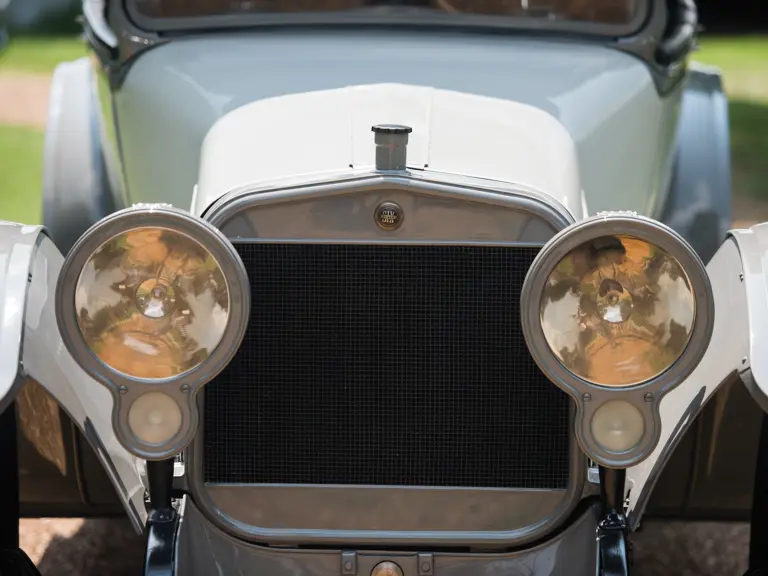


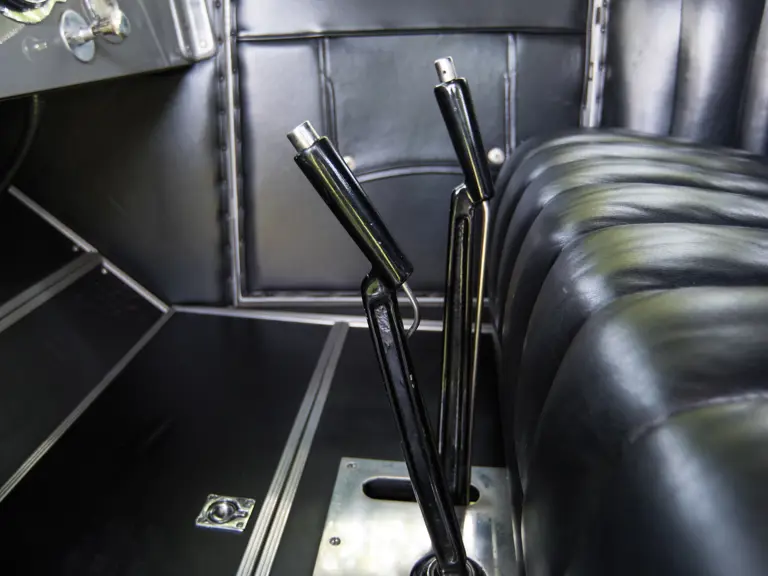

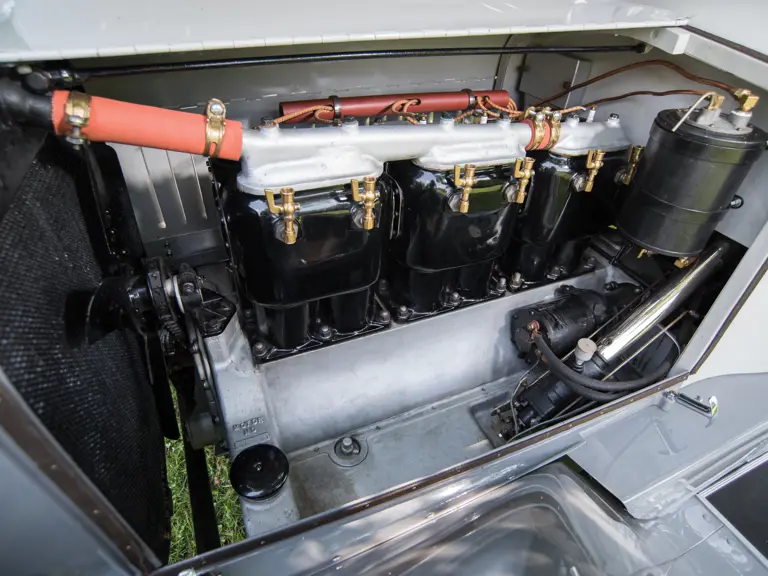
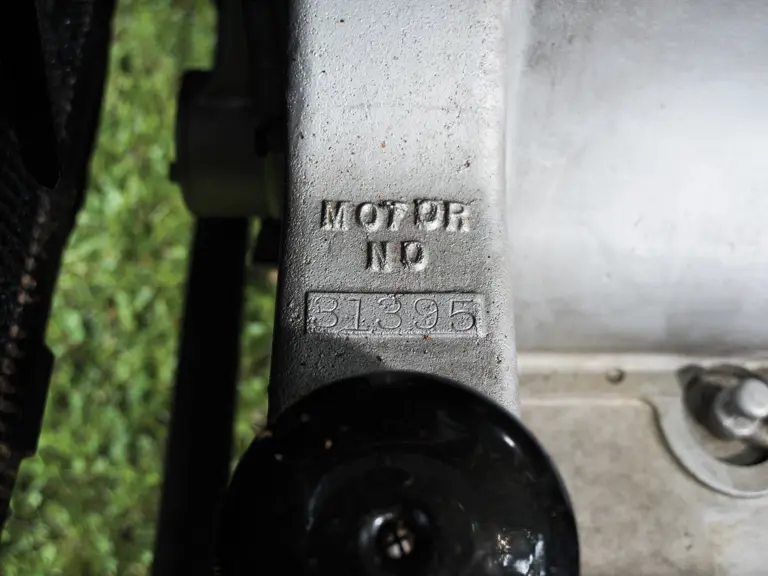


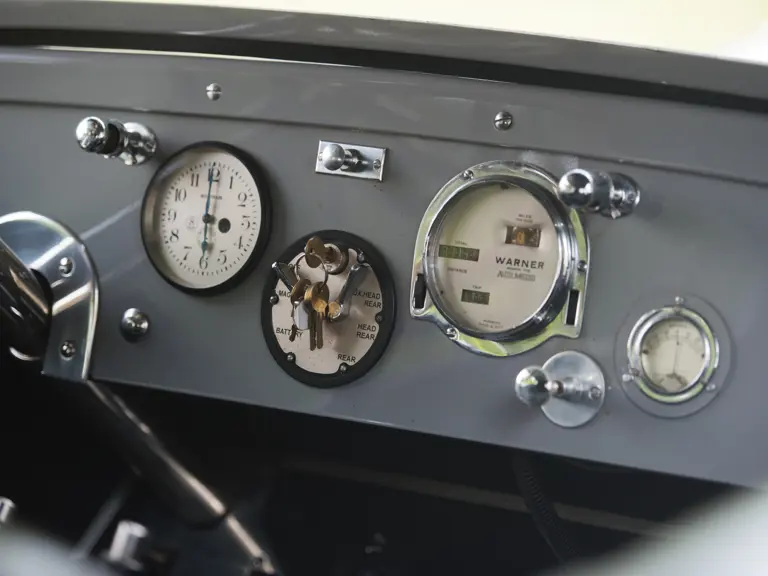
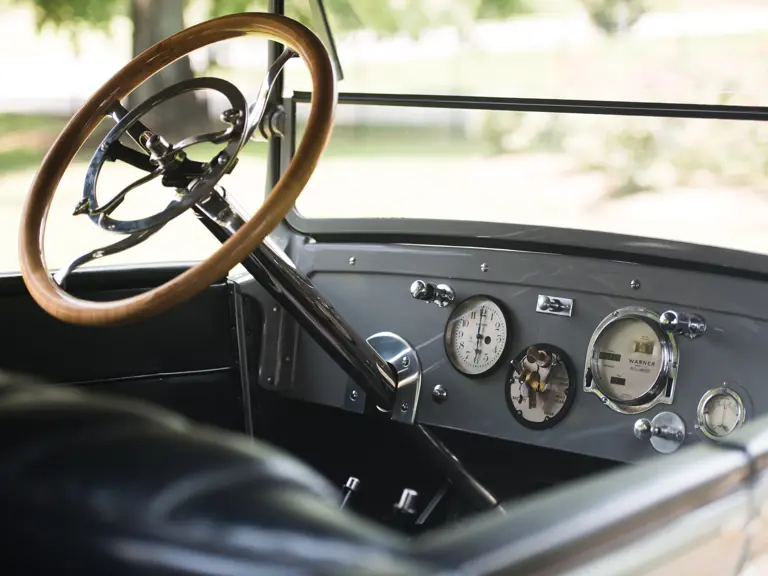
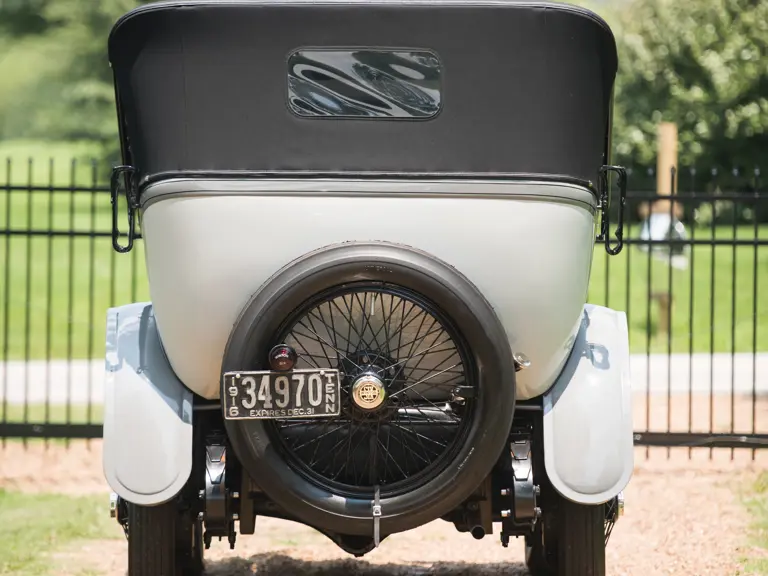
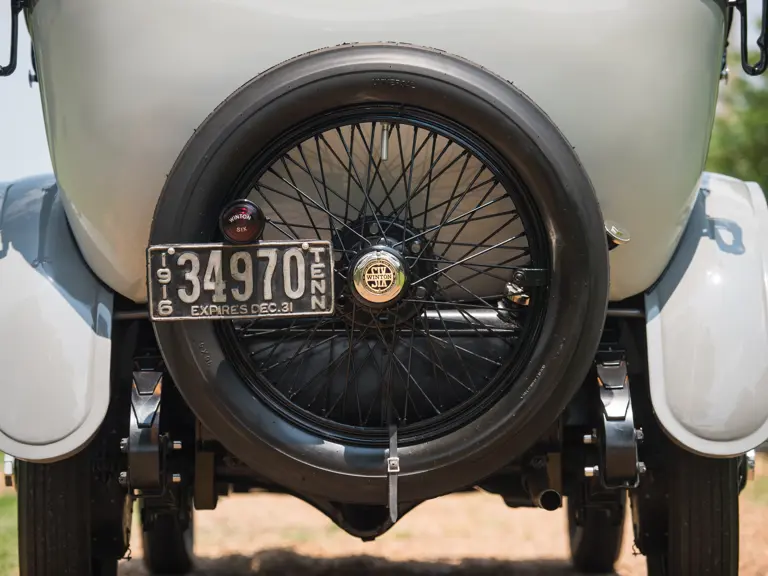
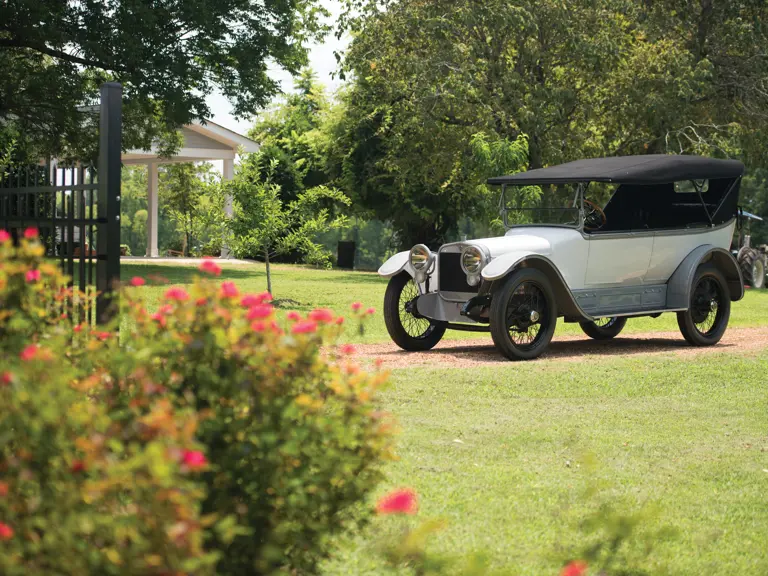
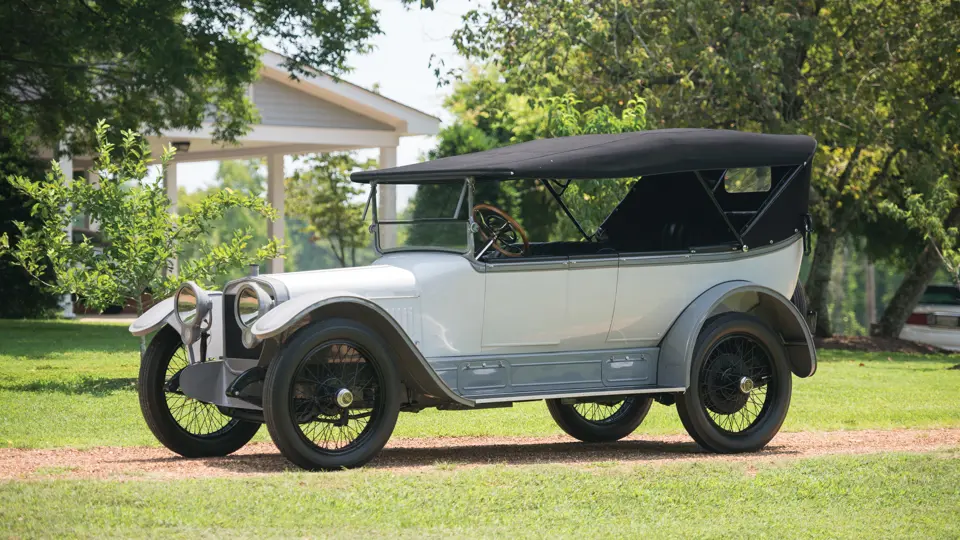
 | Hershey, Pennsylvania
| Hershey, Pennsylvania
